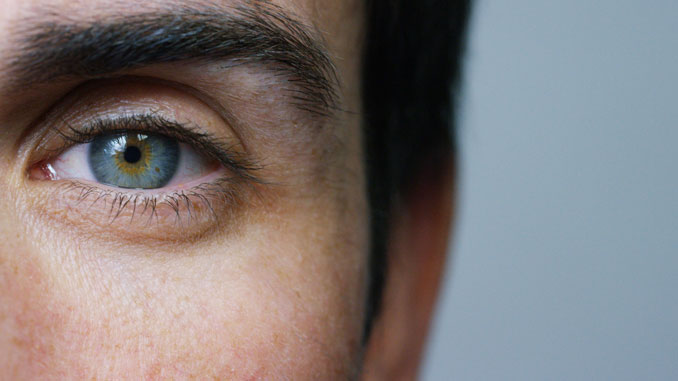
Glaucoma is the most common cause of blindness in the U.S. in people over 60 years old. In fact, if you’re over 60 years old, have a family history of glaucoma, or are an African American over the age of 40, you are at a much higher risk for developing glaucoma than the rest of the population. And it’s not just age and ethnicity that increase your risk—diabetes and high blood pressure are also risk factors for glaucoma.
So, what is glaucoma? “Glaucoma is a chronic eye disease due to increased pressure in the eye that causes damage to the optic nerve over time,” says Dr. Richard Wong, board-certified Ophthalmologist at Zeiter Eye Medical Group who specializes in glaucoma treatment. “Most patients don’t notice any symptoms initially, but over time they can lose peripheral vision and eventually central vision.”
Imagine looking at a photograph—a person with normal vision would see the photograph clearly. A person with moderate glaucoma, however, would only be able to see the center of the photo, with the edges blacked out. If left untreated, total blindness can occur.
There are two major types of glaucoma, primary open-angle glaucoma and narrow-angle glaucoma. “In open angle patients, the area between their cornea and their iris is wide open. In narrow-angle patients, the cornea and iris are closer together,” clarifies Dr. Wong.
Right in the crux of this “angle” is the eye’s drainage system. In all glaucoma patients the aqueous humor liquid that nourishes the eye doesn’t drain efficiently, leading to a build-up of pressure.
In open-angle glaucoma patients, the symptoms appear gradually over time—in narrow-angle patients, however, pressure can rise very quickly leading to an acute angle-closure glaucoma attack, for which you should seek immediate medical attention. Symptoms include sudden blurry-vision, eye-pain, headache, and nausea. If not treated quickly, blindness can occur.
At Zeiter Eye, Dr. Wong says the glaucoma treatments vary by the glaucoma type and severity, from eye drops, to Selective Laser Trabeculoplasty, to Peripheral Iridotomy for narrow-angle patients. Thanks to breakthroughs in medicine, Zeiter Eye also can perform MIGS surgery (Minimally Invasive Glaucoma Surgery). “We can put in stents or use a special blade to do procedures that used to be a lot more invasive,” states Dr. Wong. “With MIGS, the healing time is a lot shorter.”
If you think you could be a glaucoma suspect or are experiencing symptoms, call your local ophthalmologist for an eye exam today.
For More Information:
Zeiter Eye
Multiple Locations
(209) 466-5566
ZeiterEye.com

